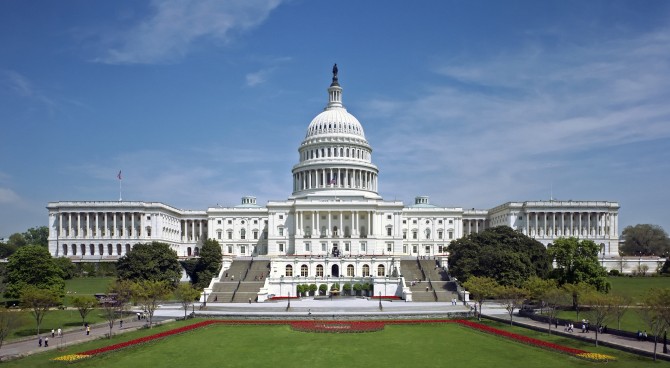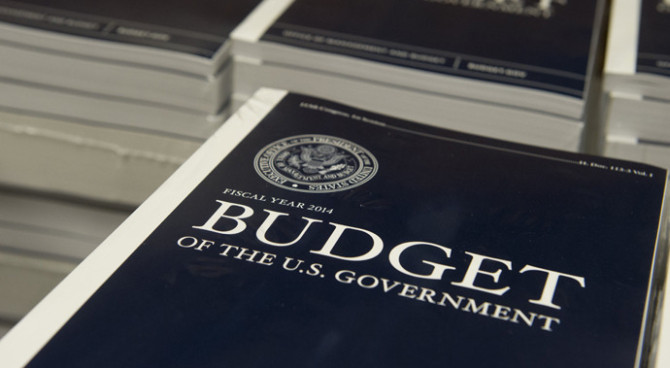Janet Yellen tries to sell even more spending as a growth and anti-inflation policy. It’s the opposite of what’s needed now.
With inflation at 7%, the highest rate since 1982, and the Federal Reserve set to tighten monetary policy, you would think the president and Congress would be looking for ways to end the spending spree in Washington. Yet remarkably, bipartisan discussions abound to increase this year’s omnibus appropriations by 16%—almost a quarter of a trillion dollars—pass another round of Covid stimulus, and resurrect the $1.7 trillion Build Back Better bill. It is hard to recall a greater disconnect between economic reality and public policy in American history.
This inflation has been driven by an explosion of federal spending, which was set to average 20% of gross domestic product in 2020 and 2021. Instead it doubled to 40% of GDP in a 12-month period as pandemic spending exploded. The multiple stimulus bills did more than fill the gap in aggregate demand. Spending surged as the pandemic shutdown reduced employment and production during that period by an average of 7%. In this textbook case of inflation, $1.20 of income began chasing 93 cents of goods and services, a process greased by expansive monetary policy, and that mismatch sent inflation to a 40-year high.
Checking-account balances are still 350% of their pre-pandemic level. Of the $5.8 trillion in total Covid stimulus approved by Congress, some $400 billion has yet to be spent. Massive state surpluses have emerged from federal grants. All states combined are sitting on $113 billion in ready cash. Median household real wealth has surged by $27 trillion since the pandemic began, generating a potentially massive wealth effect on consumption.
The producer price index, a key driver of consumer prices, rose 9.7% in 2021, while import prices, usually a moderator of inflation, rose 10.4%. And 75% of the 17% rise in housing costs last year has yet to show up in consumer prices because rental leases cause shelter costs to lag behind increases in housing costs. Shelter costs make up a third of the consumer price index.
Inflation permanently increases entitlement spending via automatic indexing. The current 7% inflation will add $1.5 trillion in new spending over the next decade. Under current services budgeting, discretionary spending will rise by $641 billion. Given everything that’s going on in the economy, how is it possible to justify a massive increase in the omnibus appropriations bill, a new stimulus bill, or the resurrection of Build Back Better?
In a final desperate effort to save Build Back Better and elevate government to the center of American life, Treasury Secretary Janet Yellen is trying to pitch the Biden economic agenda as “modern supply-side economics.” But whereas real supply-side economics creates a private incentive to work, save and invest, Ms. Yellen’s approach expands government benefits as a way of “fixing supply-chain bottlenecks” and substitutes “public investment” for private investment.
In virtually every case where Ms. Yellen claims Build Back Better will expand employment and production, experience and logic suggest otherwise. Almost 43% of the first year’s cost of the bill is funding the expanded child tax credit with no work requirement. A quartet of University of Chicago economists have concluded the expanded child tax credit would reduce labor supply by 1.5 million workers, just as soaring pandemic transfer payments resulted in 2.5 million workers dropping out of the labor market. More than 20% of the bill’s first-year cost, $52 billion, would fund tax cuts for rich people in high-tax states, not exactly a supply-chain fixer.
Build Back Better would expand ObamaCare and other healthcare subsidies, which the Congressional Budget Office has consistently found reduces the supply of labor. The CBO concluded that it is “unclear” if family and medical leave would have a positive or negative effect on employment but “the magnitude would probably be small.”
Ms. Yellen’s modern supply-side economics argues that government can invest based on enlightened political motives more efficiently than the private sector can invest based on the profit motive. But “federal investment is estimated” by the CBO “to yield half of the typical returns on investment completed by the private sector.” The European Union, with its larger government benefits, greener policies and more government intervention in the marketplace, doesn’t seem to be benefiting from modern supply-side economics. Europe has grown at 1.57% for 20 years while the U.S. has averaged 2.1% growth—that’s more than a third higher. All of Ms. Yellen’s claims ignore the negative economic effects sure to be produced by Build Back Better’s tax increases.
At some point, the Biden administration and Congress must accept a corollary to Adam Smith’s truism: “It is not from the benevolence of the butcher, the brewer, or the baker, that we expect our dinner, but from their regard to their own interest.” When government gives people the things they normally must work to be able to buy, many will butcher, brew, and bake less. This is the lesson of the War on Poverty. When means-tested transfer payments rose dramatically, the share of prime work-age people in the bottom 20% of American income earners who actually worked fell to 36% from 68% over the ensuing 50 years. All analysis of the labor component of the supply chain must recognize that if the government gives people things they typically get by working, many people will quit working.
Instead of offering a phony version of President Reagan’s supply-side economics, Democrats would be better off trying to replicate President Clinton’s approach to welfare reform and spending restraint. He didn’t expand the size of government, but in his last four years in office he did preside over 4.5% average annual growth, 2.3% inflation and a reduction of the federal debt. Do Americans want more prosperity or a bigger government?
Mr. Gramm is a former chairman of the Senate Banking Committee and a visiting scholar at American Enterprise Institute. Mr. Solon is a partner of US Policy Metrics.


